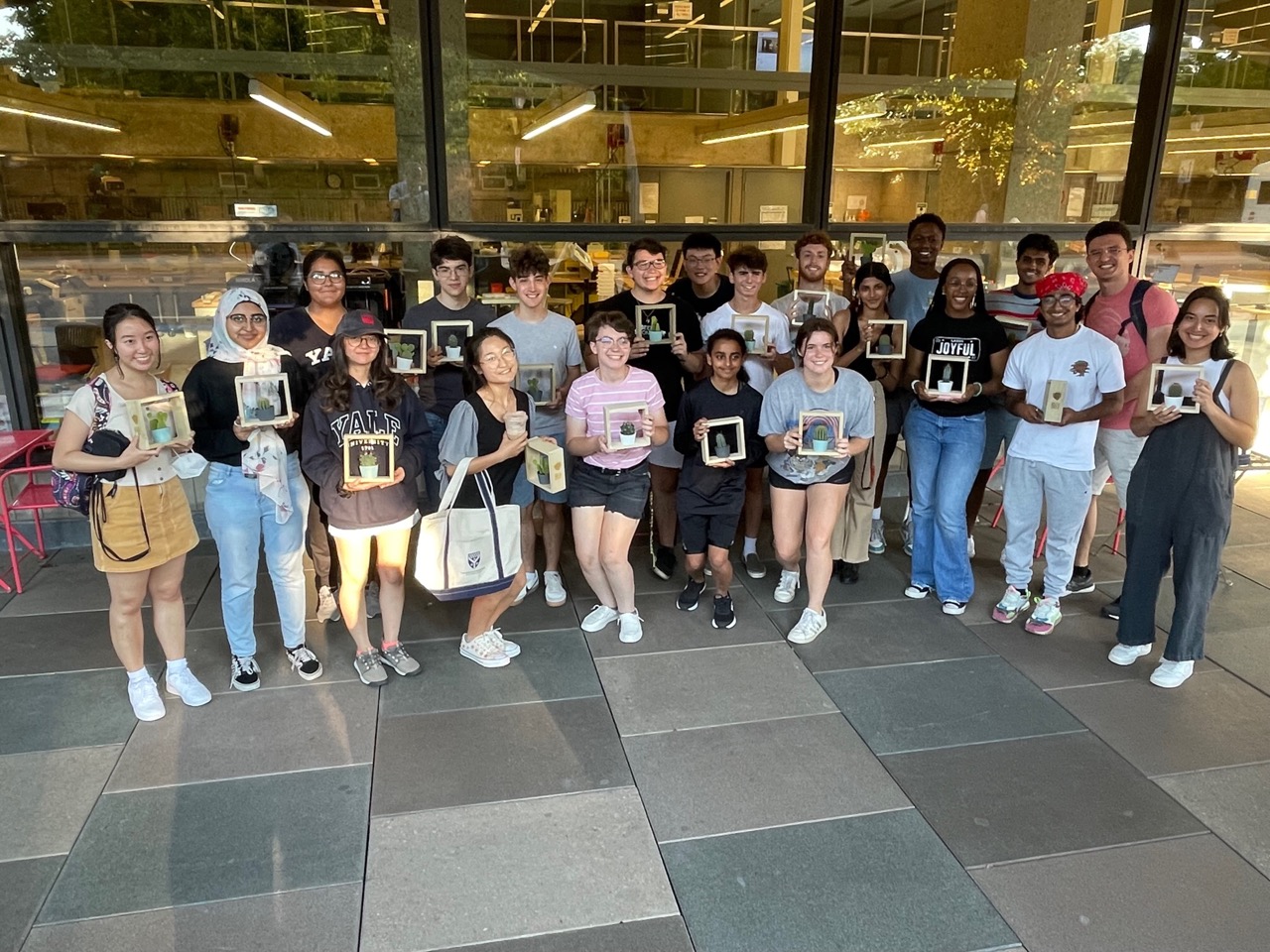New orientation program, BUILD, debuts at Camp Yale
BUILD, a pilot orientation program in collaboration between the Yale Center for Engineering Innovation and Design and the School of Engineering and Applied Sciences, launched this fall as part of Camp Yale, Yale College’s newly reimagined orientation program.

Courtesy of Vincent Wilczynski
Camp Yale, the newly revamped first-year orientation program, opened doors for first-year students interested in exploring science and engineering at Yale through the pilot BUILD program.
This fall, BUILD debuted as a collaboration between the Yale School of Engineering and Applied Sciences and the Center for Engineering Innovation and Design. Twenty new first-year students were selected by the Yale College Dean’s Office to participate in the inaugural session. Former Dean of Yale College Marvin Chun and Dean of Student Affairs Melanie Boyd suggested the idea for the program.
“We jumped at the chance to introduce more students to the STEM opportunities on campus,” said Vincent Wilczynski, deputy dean of SEAS and director of the Yale Center for Engineering Innovation and Design, or CEID.
Chun and Boyd initially reached out to SEAS and CEID to inquire about the possibility of implementing this program.
The program is a means of introducing first-years to the “new engineering and applied science culture on Yale’s campus,” Wilczynski said. The goal of the orientation was to allow students to explore a novel environment and bond with each other throughout the experience, added Y. Richard Yang, director of undergraduate studies of the Computer Science Department and professor of computer science and electrical engineering.
Yang compared BUILD to FOOT, a popular, well-established orientation program offered to first-years during Camp Yale.
“Similar to exploring a natural environment in FOOT, BUILD was about exploring a novel environment in the computer science and engineering world, where people build things,” Yang said.
As part of the program, students went on a trip to New York City, where they attended information sessions led by Yale alumni at three software companies.
Students visited Security Scorecard, a digital forensics company co-founded by a Yale graduate, Aleksandr Yampolskiy GRD ’06; Simon’s Foundation, a nonprofit that designs research software; and Google.
“The continuing involvement of Yale alums and their commitment to interacting with students is a testament to the engagement of alums with the campus community,” Wilczynski said.
These companies were chosen intentionally to expose the students to diverse applications of “the building process” in computer science and engineering, according to Yang. Many students agreed that the trip to New York was “the highlight” of the program. Lilia Chatalbasheva ’26 said she particularly appreciated the candid discussion of the importance of diversity, inclusion and women in STEM.
The program was geared toward students who had little-to-no experience in computer science, Yang said. Gloria Kim ’26 said that despite having no coding or engineering experience and not being a computer science or engineering major, she loved the STEM focus of the program.
“I can definitely see myself coming back to the CEID,” Kim said.
Students explored building physical objects at the CEID while also constructing virtual hardware utilizing the resources of the Computer Science Department. In collaboration with Scott Petersen, a lecturer in the Computer Science Department, students explored the connections between computer science and music.
Other activities in the BUILD program included Scratch programming and exploring data visualization.
“The goal of this program was to expose students to the applications and connections that computer science has with different humanities disciplines like music and art,” Yang said.
The program highlighted how computer science and engineering can connect with aspects of other humanities or social science disciplines that students may be interested in studying at Yale. Reva Tagare ’26 enjoyed “getting a taste of the many flavors of STEM.”
In addition to the New York City trip and collaborative building projects, students attended workshop activities led by Jay Lim and Cody Murphey, both lecturers in the Computer Science Department. Lim and Murphey played an integral role in facilitating the program, Yang said. A notable student favorite was a workshop on “The Physics of Bubbles,” taught by Larry Wilen, a senior research scientist and design mentor at the CEID.
BUILD also introduced students to the vast STEM resources they could access on campus. Students became certified members of the CEID, Erin Murray ’26 said, which has inspired many of them to return to the center.
“I’m starting to think about projects I may want to start on my own [at the CEID],” Ishan Narra ’26 said.
Outside of workshops and meetings with alumni, students in the BUILD program formed a “beautiful close-knit community,” according to Fiza Shakeel ’26. Anjal Jain ’26 echoed this sentiment, calling the BUILD program “the highlight” of her Yale experience so far. The community created by faculty and student leaders quelled the “anxiety [that] many of us were experiencing over our recent move to New Haven,” Carl Geiselhart ’26 wrote in an email to the News.
However, some students had suggestions for ways BUILD could improve in the future. Harrison Copp ’26 said that BUILD had less “community development” than other orientation programs because while students collaborated on projects, they didn’t necessarily get to know each other at “a deeper level” through sharing stories like “hometowns,” which are traditions of the more established FOOT and FOCUS orientation programs.
“I was frequently told that Yale was weaker [than peer institutions] on the engineering side,” Noah Dee ’26 wrote in an email to the News. “While this might be true, the BUILD program certainly reassures me that Yale is recognizing the need to advance in these subject areas.”
Whether Camp Yale will offer the BUILD program as part of its orientation programs next year is still yet to be determined by the Yale College Dean’s Office, but both Yang and Wilczynski said that they hope to expand BUILD in the future.
The CEID is located at 15 Prospect St.







